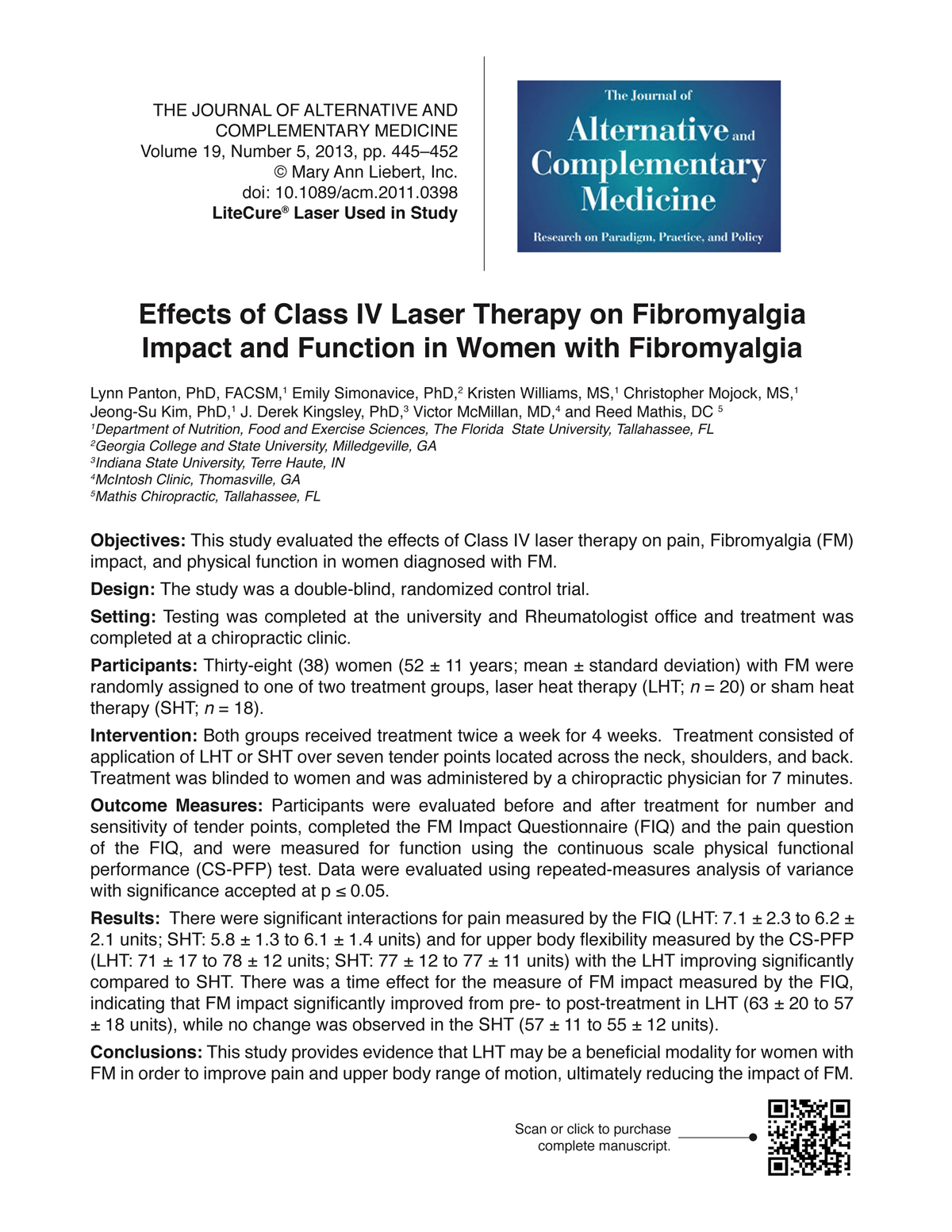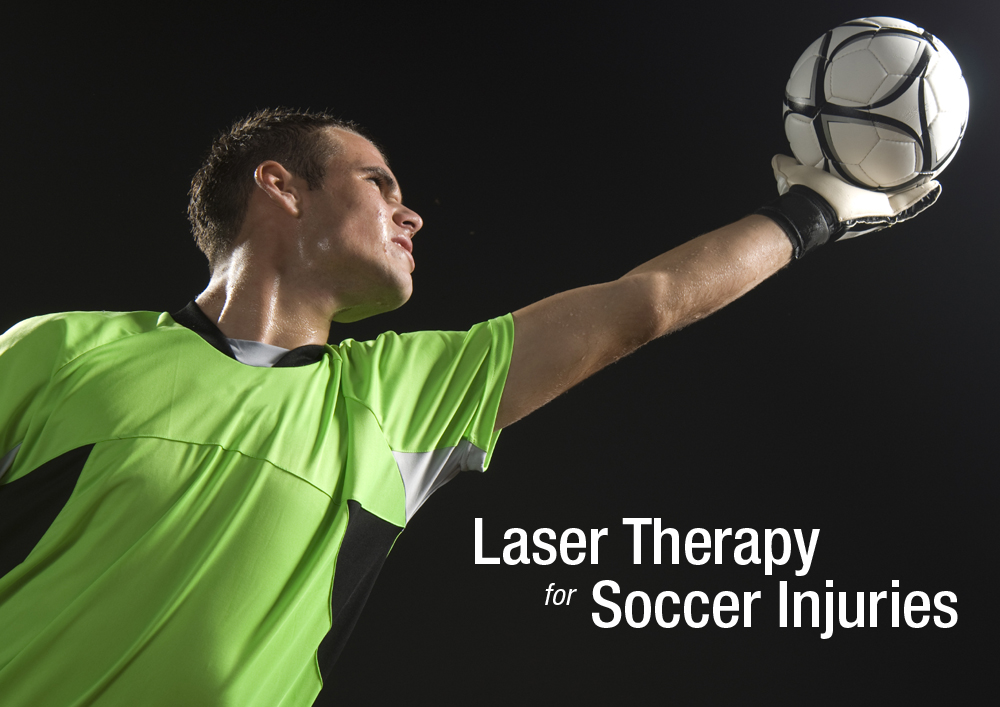Learn tips about Class IV laser therapy and other health related topics on the LightForce Therapy Lasers blog! Check back weekly for updated posts.
Have you been skeptical about laser therapy because you are not convinced by the scientific studies you have seen? Here are two controlled, double-blind studies that will make you rethink your view of laser therapy:
The Effectiveness of Therapeutic Class IV (10 W) Laser Treatment for Epicondylitis
![]() In this study, fifteen patients with documented chronic tendinosis of the elbow were randomized into sham or laser therapy treatment. The laser group received eight 5.5 minute treatments of 10 J/cm2 every-other day for 18 days. Follow-up evaluations were made at 3, 6 and 12 months. Multiple pain measures, handgrip strength and functional impairment all improved with respect to sham treatment. Statistical significance was maintained to 1 year follow-up.
In this study, fifteen patients with documented chronic tendinosis of the elbow were randomized into sham or laser therapy treatment. The laser group received eight 5.5 minute treatments of 10 J/cm2 every-other day for 18 days. Follow-up evaluations were made at 3, 6 and 12 months. Multiple pain measures, handgrip strength and functional impairment all improved with respect to sham treatment. Statistical significance was maintained to 1 year follow-up.
Publication Details: Lasers In Surgery And Medicine, Volume 45, Issue 5, 2013, pp. 311-317, © 2013 Wiley Periodicals, Inc.
Authors: Delia B. Roberts, PhD, FACSM, Roger J. Kruse, MD, FACSM, and Stephen F. Stoll, MD
Click here to download the abstract.
Effects of Class IV Laser Therapy on Fibromyalgia Impact and Function in Women with Fibromyalgia
Thirty-nine women w ith fibromyalgia syndrome were randomized to receive laser therapy treatment or sham heat gun treatment. Treatments were administered twice a week for 4 weeks at eight tender points across the neck, shoulders and back. Laser therapy treatment significantly improved upper body flexibility, fibromyalgia impact score and a composite measure of pain compared to the sham treatment.
ith fibromyalgia syndrome were randomized to receive laser therapy treatment or sham heat gun treatment. Treatments were administered twice a week for 4 weeks at eight tender points across the neck, shoulders and back. Laser therapy treatment significantly improved upper body flexibility, fibromyalgia impact score and a composite measure of pain compared to the sham treatment.
Publication Details: The Journal Of Alternative And Complementary Medicine, Volume 19, Number 5, 2013, pp. 445–452, © Mary Ann Liebert, Inc.
Authors: Lynn Panton, PhD, FACSM, Emily Simonavice, PhD, Kristen Williams, MS, Christopher Mojock, MS, Jeong-Su Kim, PhD, J. Derek Kingsley, PhD, Victor McMillan, MD, and Reed Mathis, DC
Click here to download the abstract.
Whether you’re a world-class athlete or someone who just enjoys a pick-up game of soccer with friends, you need to keep yourself healthy to stay in the game.
Laser therapy is becoming increasing popular as a preferred treatment method for soccer players worldwide to help reduce pain and inflammation and get players off the bench and back out onto the field.

Here are 3 common soccer-related injuries that laser therapy works wonders on:
Hip Adductor
The hip adductor can be a difficult area to treat and many soccer players experience hip pain from the rigors of full-speed game play. The hip is a large area, with deeply located structures that cause pain. Treating injuries with deep tissue laser therapy is ideal because of its ability to deliver a large dosage at depth to these deep injuries.
Try on-contact massage delivery techniques for optimal results.
Hamstring
As seen in the World Cup this year, hamstring injuries are exceedingly common in soccer. These injuries can be extremely painful and keep a player out of the game for an extended period of time. There is an alternative to ice and massage for hamstrings – laser!
Using the massage ball attachment head, decreased inflammation and pain can be quickly achieved. The laser penetrates deeply into the tissue and increases microcirculation to bring oxygen, vital sugars, proteins and salts to the affected area, all while the athlete enjoys a warm massage sensation.
Shin Splints
Shin splints are another common and painful injury for soccer players. Sudden increase in activity and overuse can cause the lower leg muscles to improperly handle shock, thus causing the tibia to overcompensate, leading to pain and inflammation of the surrounding areas. While rest is advisable, laser therapy should be considered to assist the body in its natural healing process, and make the athlete more comfortable during that process.
A couple of quick laser treatments will help to reduce the associated pain and inflammation and increase blood flow to the area, allowing the athlete to recover more quickly. Also remember that due to the painful nature of shin splints, an off-contact treatment method should be used to maximize patient comfort.
If you haven’t considered using laser therapy to help keep soccer players in the game, you’re missing a chance to score big with reduced recovery times and happier patients!
When patients are in pain there are many modalities and treatment techniques that can provide answers. Class IV laser therapy can be a great partner with many other pain relief techniques, here are three complimentary treatments you might not have considered…
Kinesio Taping
Kinesio taping has many benefits that make it an ideal complement to Deep Tissue Laser Therapy®. By lifting the epidermis from the fascia, taping allows for increased blood and fluid flow, and in cases of swelling, helps to reduce inflammation and pain.
Treating with LightForce® therapy lasers, both before and after kinesio taping, helps to enhance these properties. While the laser should not be used directly over the tape because the fabric will diminish penetration, it may be used on surrounding areas. The tape gives the patient the security they need to move with confidence and the laser provides the muscle loosening effect they need to perform these movements with comfort.
Graston®
The Graston Technique relies on manual manipulation with metal instruments to detect and break up scar tissue and adhesions. After manual manipulation, there can be some temporary inflammation, and deep tissue laser therapy is effective to use before and after to help reduce any resulting inflammation.
Class IV laser therapy also increases blood flow to the treated areas, bringing essential nutrients to help the chemically damaged tissue normalize.
Spinal Decompression
Spinal decompression is used to help relieve pressure on intervertebral discs, thereby alleviating associated pain and increasing nutrition flow to the discs, allowing them to begin healing.
Combining spinal decompression with deep tissue laser therapy helps to further reduce pain, increase circulation, and reduce inflammation. Laser therapy is often administered before and after decompression sessions for optimal results.
Please share any other modalities or treatment methods you are combining with laser therapy for great results!



